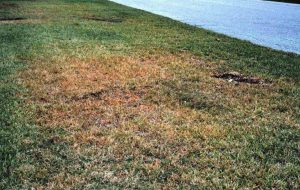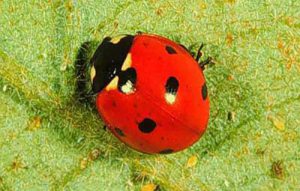Integrated Pest Management (IPM) is a sustainable approach to managing pests through cultural, host resistance, physical or mechanical, biological, cultural and chemical control methods.
Why should you use IPM?
IPM provides long-lasting strategies resulting in more consistent pest control for happier customers while reducing business expenses by using less pesticides, fuel and equipment. IPM minimizes pest resistance, which can occur when the same pesticide is used repeatedly to control the same pest. Pesticide resistant wild type populations survive repeated pesticide applications and pass on the genetic trait to offspring which become the dominant population. IPM preserves beneficial insects which provide natural biological control for many pest pressures. IPM also minimizes environmental impacts such as water pollution due to pesticide runoff to surface water or leaching to ground water.
What does an IPM program involve?
A successful IPM program uses the following steps and strategies:
- Routinely scout for pests and disease, especially key pests and diseases, and the damage common to plants. Scouting promotes early detection of pest or disease problems. Since pests and disease are only treated when they are present pest control failures can be detected and pesticide resistance is minimized.
- Determine what pest or disease is responsible through accurate identification. After the pest or disease has been identified the best control methods and timing can be determined. Be able to recognize beneficial insects, both predators and parasitoids, and if they may provide adequate control without any other methods.
- Determine the damage threshold. Know how much aesthetic damage your client can tolerate and how many pests or how much area can be damaged before unacceptable loss occurs.
- Utilize the IPM toolbox to devise the best solution for the pest or disease using a combination of control strategies. The IPM toolbox includes the following control methods:
- Cultural control: Cultural controls include using sound design practices that plant the right plant in the right place, using pest free materials and equipment,

Cultural practices such as over watering and improper fertilization are most likely the cause of this Take-All-Root-Rot. properly preparing the planting site, adhering to planting dates, keeping plants and turfgrass healthy by using appropriate amounts of water and fertilizer, mulching, keeping landscapes clean of dying, dead, damaged or deranged plant material, and tolerating a few pests.
- Host resistance: Planting cultivars of plants that are more resistant to pests than other selections.
- Physical or Mechanical control: These controls prevent pest access to the plant or area, or remove them by some means. Hand removal, mowing, cutting and pruning, and discarding off-site can reduce pest populations. Insect traps, screens, barriers, mulch and heat sterilization can also be effective.

There are many species of beneficial lady beetles. They feed on mildew, mites, whiteflies, mealybugs, Cottony cushion scale and other scale insects.
Photo credit: James Castner, UF/IFAS - Biological control: Biological controls include the use of natural enemies to kill pests: parasites, predators & pathogens.
- Chemical control: Because chemical controls vary widely in their range of action, toxicity and persistence in the environment they are selected after pest identification, and applied according to label instructions and in a way that minimizes possible harm to people and the environment. For-hire individuals and companies are required by law to have a pesticide license prior to making any applications to landscapes (this includes the herbicide glyphosate aka Roundup™). Chemical controls should be used only in combination with other IPM toolbox controls and only when necessary to prevent serious damage to plants when aesthetic thresholds have been reached. Chemical controls may be biorational, soaps and oils, or synthetically produced.

Eriophyid mites on Ligustrum. Mites are not insects and require the use of a magnifying hand lens to spot them. The mites hide in the buds on the growing tips, so pesticide coverage is difficult to achieve. However, there are natural enemies (predatory mites, fungi) of many eriophyid species. Using “soft pesticides”, such as light horticultural oils, sulfur and soaps may preserve the naturally occurring beneficial enemies.
5. Evaluate your control strategy and keep records: Did it work? If not, were you able to determine why? Is there a more efficient or effective way to provide pest or disease control? Can you use this approach again on this site or other sites? Record keeping will help you identify seasonal or repeating pest and disease problems, and provide you with easy access to what works and what does not work.
Lastly, be willing to educate your clients about beneficial insects, and the maintenance and monetary challenges of expecting perfection. The pressure of maintaining a perfect landscape has resulted in people over-maintaining landscapes. Over-maintenance in the form of over-watering and over-fertilizing can cause excessive plant growth and growth during the winter season when plants naturally grow less. Excessive plant growth, and improper mowing and pruning weaken and stress plants and turfgrass, resulting in landscapes that are more susceptible to pest and disease pressures. Over-application of chemical controls can kill beneficial insects and naturally occurring organisms, and again result in landscapes that are more susceptible to pest and disease pressures.
 0
0



